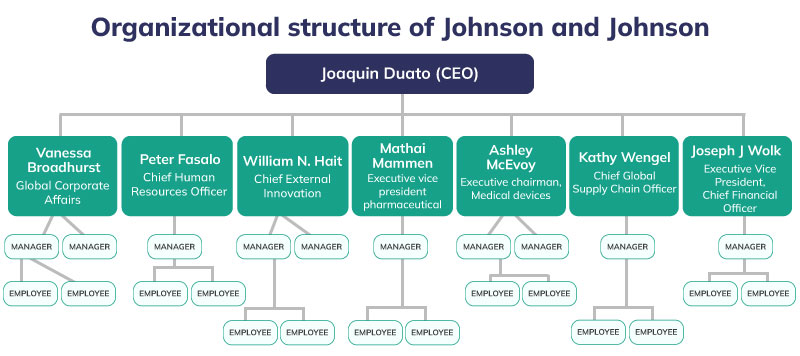What is Decentralized Organizational Structure
You must have heard about the term “decentralized” or “decentralized” organizational structure. Decentralization emphasizes distributing the administrative power or the functions of the central authority to the less concentrated area. The focus of a decentralized organizational structure is to transfer the control from the central entity to mid-and lower-level managers. Under this organizational structure, most of the decisions are taken by the mid-and lower-level managers. Moreover, some of the decisions are also taken by the lower-level employees themselves in the organization due to the short chain of command. The transfer of authority in the team further helps to empower employees to take various decisions by themselves. Hence, opting for the decentralized organizational structure helps to relieve management from day-to-day decision-making and helps to empower employees for various decision-making.
Now, you must have got an idea about what a decentralized organizational structure is. Can you guess which organizations can use the decentralized organizational structure? Yes, most large business organizations adopt a decentralized organizational structure to manage diverse business operations where the top managerial head cannot take all the decisions. Hence, the decentralized organizational structure is adopted to manage delegated tasks among other managerial heads and employees. The decentralized organizational structure is suitable for organizations where individualized customer service is needed or where there is a constant need for innovation. Besides this, the organizations that have several stores at multiple locations may also adopt this organizational structure to provide authority to the managerial head at regional offices or diverse store locations to take various decisions with respect to effective strategic planning.
Table of Contents
Advantages of Decentralized Organizational Structure
Implementing a decentralized organizational structure is highly valuable for organizations as the decentralized organizational structure can help the business organization to effectively manage the business operations by empowering employees for various decisions. The advantages of the decentralized organizational structure are discussed as follows-
Strategic decision making- One of the key advantages of the decentralized organizational structure is strategic decision making as a decentralized organizational structure ensures that the upper management team delegates the day-to-day decision-making tasks to the lower management and all the important decisions are taken by the top management. This can help the organization to focus on strategic decision-making.
Efficiency- Implementing a decentralized organizational structure can help to ensure efficiency in the organizational operations through quick and independent decision-making. Also, the top management may be incapable to take various decisions, and delegating tasks to lower-level employees may help the organization to improve efficiency.
Disadvantages of Decentralized Organizational Structure
Through the analysis of the advantages of a decentralized organizational structure, we have seen that the decentralized organizational structure is important for the large organization to effectively manage diverse business operations. However, the decentralized organizational structure also suffers from various drawbacks which are discussed as follows-
Local viewpoint- Delegating the tasks to the middle and lower-level manager leads to a localized viewpoint as the local manager may take a decision considering the local needs rather than the needs of the company as the whole. This can lead to a situation of disintegration between the local operations and business needs as a whole.
Procedural differences- Decentralized organizational structure can lead to procedural differences at each branch of the organization as the local manager may be given the authority to take various decisions which can result in local viewpoint and procedural differences. Hence, the decentralized organizational structure may make it challenging for the organization to facilitate various controls like quality controls.
Example of Decentralized Organizational Structure
Johnson and Johnson have adopted the decentralized organizational structure by delegating various tasks to the local management. The main aim of the company behind the decentralized organizational structure is to better understand the customer needs and effectively meet the market needs. You must be aware of the baby products of Johnson and Johnson but do you know about the medical device and pharmaceutical products of the company? The company also sells pharmaceutical products and medical devices to customers. The different product divisions and the functions of Johnson and Johnson require the company to adopt a decentralized organizational structure. The organizational structure of Johnson and Johnson is shown as follows-

The decentralized organizational structure helps the company to effectively manage the business operations through efficient administration, specialization, autonomy at a lower level, quick decisions, etc. Along with this, the decentralized organizational structure also frees the top management from the day-to-day operations which further helps Johnson and Johnson in strategic decision making.
FAQs
How does a Decentralized Organizational Structure differ from a Centralized Structure?
A Decentralized Organizational Structure distributes decision-making authority across multiple levels, while a Centralized Structure concentrates decision-making at the top.
How can organizations strike a balance between decentralization and centralized oversight?
A balanced approach can be achieved by decentralizing decision-making while centralizing strategic decisions and key policies that align with the overall organizational vision.
What are some challenges organizations may face when transitioning to a Decentralized Organizational Structure?
Challenges may include resistance to change, difficulty in establishing effective coordination mechanisms, and the need for proper training to empower employees in decision-making.
Previous Structure
Centralized Organizational StructureNext Structure
Mechanistic Organizational Structure
 Proof Reading
Proof Reading  Copy Writing
Copy Writing  Resume Writing
Resume Writing  Blogs
Blogs Guides
Guides SOP's
SOP's Student Resources
Student Resources Research Topics
Research Topics Login
Login Register
Register